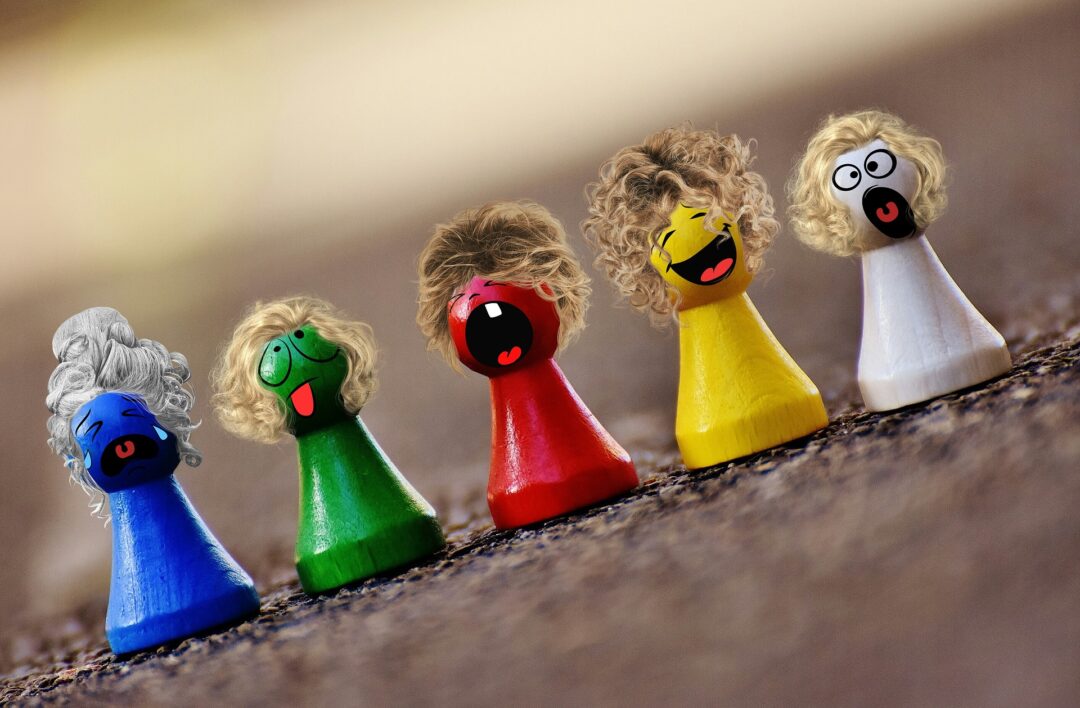As both an actor and movement coach one of my favorite things to do is watch the performances of others.
It’s such a joy to witness both the extreme and the subtle in character movement performances, as each character requires something a bit different.
Whether it be on stage or screen, I often find myself getting wrapped up in the non-verbals, the relationship between characters’ physical forms, and how sometimes, without words, the story shines just a brightly, if not brighter.
I could probably fill a book of all the performances I’ve seen that have blown me away. I take that back, I definitely could fill a book.
But, today is not a day for a book.
So, here’s a list of 10 performances that jumped to mind when I was posed this question by a friend: phenomenal character movement performances from tv and film…go!
(Oh and or course, warning of probable spoilers ahead.)
Johnny Depp as Captain Jack Sparrow
Now, one’s feelings on Johnny Depp aside, his physicality as Captain Jack Sparrow is incredibly unique. (Mind you, I really only mean the first Pirates of the Caribbean movie here as it’s easily my favorite.) He keeps us on our toes the entire time. And well, he’s rather on his tiptoes most of the time, too, isn’t he?
Is he always drunk? Probably. But maybe not? Will we ever know?!
The indirect nature of everything he does makes him unpredictable as well as larger than life. I can’t speak for what methods of movement Depp actually employed, but to me, he always seems on the balls of his feet and, well, took a page out of Jackie Chans Legend of Drunken Master.
Glenn Close as Marquise Isabelle de Merteuill
Both the play and film adaptation of Dangerous Liaisons holds a special place in my heart. If you have any interest in historical French fashion, you simply have to check it out. The flowing, colorful and lacy costume design of this film taking place around 1760 pre-French revolution will simply take your breath away.
As goes without saying regarding period performances, one hurdle a performer has to contend with is that of the costume itself. How wearing a corset changes how you walk, stand, sit, lounge all come into question and requires adjustments. Close’s performance of the controlled, striking, and calculating aristocrat is anything short of mesmerizing.
Her monologue about when she came into society at 15 is probably the most classic. She expresses her use of detachment which you can see her utilize throughout the film. She glides, switches masks at the lift of her chin, and we see her movements grow less and less fluid/controlled as the masks begin to shatter beneath her.
Doug Jones as Amphibian Man
Nothing quite beats an actor in a creature costume. MOCAP definitely has its place, and when CGI is done well, I don’t get as bothered, but I really love it when an actor has the opportunity to disappear into a role physically. Doug Jones is probably the poster child for this kind of work. If you don’t recognize his name, I’ll bet you’ve still seen him in something. His performance in The Shape of Water is so stunningly crafted.
What I love about his performance most is how he breathes. Especially the first few times we see him out of the water. It’s as though his whole body is breathing, and you can see him breathing from multiple places on his body. Mouth, gills, stomach, and even his lower back.
Brigitte Helm as Maria/Maschinenmensch
Metropolis, the German expressionist sci-fi dystopian drama from 1927, remains my staple and fav silent film. German expressionism, for context, could refer to several creative movements in Germany that emerged in the 1910s, such as paintings, architecture, and film. Known for dark themes, slightly off angles, pale makeup with dark eyes, and exaggerated movements. Think Burtons Batman Returns or Hitchcock’s Psycho (the original) they’re both great modern pieces influenced by German expressionism.
Helm displays incredible skill as she plays two versions of the same character. Maria and Maschinenmensch, or the robot version of Maria. Maria is gentle and uses more fluid, sustained movements, as when she’s calming the poverty-stricken children at the beginning. In contrast, looking at Robot Maria, her movements are more angular, sudden, and violent as she rallies the working-class men into a chaotic state. Both of the Marias are commanding in their own way. Plus, her facial expression work is just beyond incredible.
Paul Ready as Lee
Straight off, I’ll say that if you haven’t seen Utopia (the original BBC show from 2013), I can’t recommend it engouh, though it isn’t for everyone. Utopia is a feast for the eyes. It’s a graphic novels, pandemics, pharmaceuticals, terrifying organizations infiltrating the government, assassins, running-for-your-life-trying-to-pice-together-the-puzzle kind of story.
Now, I could gush about Paul Ready all day and have happily in the past. His performance as the hitman Lee is quirky, delightful, and terrifying, all wrapped up in what I lovingly refer to as a compact modern mod package.
In the first series, he’s injured, shot in the chest, and when he shows up, not dead in series 2, we learn that he’s partially paralyzed. He keeps his left arm folded and held tightly to his side, fingers in a fist, and he’s often working harder than you’d think to catch his breath. He’s also got a subtle limp. His entire left side, specifically his arm, just seems a bit, well, dead, and it’s along for the ride. I’ve no clue if Ready utilized Labanotation for his work on Lee, but to me, that arm appears bound and heavy.
Nive Nielsen as Silna/Lady Silence
AMC’s The Terror continues to be a spectacle of beautifully weaving the historical with the supernatural. Season one drops us off in the arctic in the 1840s, when the British searched for the northwest passage known as the Franklin expedition.
Nielsen plays a local Inuit woman, given the name Lady Silence by the men of the expedition. What I find most beautiful about her performance is how she moves through the landscape of the arctic. When she walks, she’s grounded, incredibly connected to the earth. This only highlights how out of their depth the explorers are, as the men struggle and stumble through the landscape, appearing they don’t belong.
Hugh Dancy as Will Graham
Oh, Will. Precious peanut that must be protected. There are so many things that could be discussed about Dancy’s performance in NBC’s Hannibal. With his lack of eye contact, constant blinking, and subtle twitching to low-grade seizure twitching, Will always seems like he’s about to pop. Dancy incorporated elements of what he learned while playing Adam Raki, who has Aspergers, from the film Adam a handful of years before.
To me, it’s as though there’s this tight coil inside of Will, this spring that is wound so tightly that it makes his entire body exist on a frequency that is not only unhealthy but also unsettling. By developing Will’s movement signature this way, it’s the perfect companion to not only the internal struggle he’s battling with daily but also the calm, measured and graceful movements of his counterpart Hannibal Lecter. (Who…to be honest, also easily could have made this list and crossed my mind multiple times, as his performance is also stellar.)
Aaliyah as Queen Akasha
This is the 90s kid who was a goth in high school speaking but seriously, as delightfully awful as 2002s Queen of the Damned is, there’s three things that shine to me. The concert scene, the soundtrack, and Aaliyah. It was the film she was working on when she passed away, and it gives us an inside view into the talent that we lost, wondering what other incredible things she could have done.
Queen Akasha nails quintessential vampire queen in that she moves in a fluid, commanding, and otherworldly way. You don’t question that she’s from an ancient time. How she interacts in the modern world, and, well, she sticks out like an enchanting sore thumb. For me, when I watch each scene she’s in, she never seems to stop moving, no matter how subtle it is. And she manages to continue that fluidity even when she makes a sudden move. There’s just this grace to her that I haven’t quite seen anywhere else.
Andy Serkis as Gollum
Speaking of MOCAP, I’d be remiss not to mention Lord of the Rings Gollum. I’m thinking specifically in Two Towers, just all the Gollum and Smeagol stuff. Known for his MOCAP work, Serkis delivers us this complex, small but impactful creature.
What I’ve always found impressive about Gollum is his compactness. Through facial expression, we can see not only who is about to speak but the gears turning in both of their heads. I’m thinking the argument between Gollum and Smeagol specifically, which, to this day, is still a joy to watch unfold.
Robin Weigert as Calamity Jane
HBO’s Deadwood. It’s hands down one of my favorite shows of all time. This lawless territory of Deadwood, South Dakota, ends up creating a community, in many ways, against their will (or better judgment). Each character is incredibly complex in their own way, but I don’t think I can express how much I adore Jane. Easily one of the most impactful performances I’ve ever seen.
Her swagger is the best swagger, and this may seem like an odd way to put it, but Jane just feels lived in. There’s a groundedness to her, even when she’s near blackout drunk, with tears and snot running down her face. Beautifully balancing the harshness of yielding a bullwhip, the slightly hunched shoulders and choppy gestures with the gentleness of the kind touch required (and hoped) of a nurse wrapping a wound. She’s a larger-than-life kind of character, not forgetting that she’s based on the real Jane Cannary, but she’s larger than life without being a caricature.
What’s your favorite character movement performance?
I could easily go on with more shout outs to performances I’ve adored, and perhaps will at another point.
So, your turn now, what favorite character movement performances do you have?




